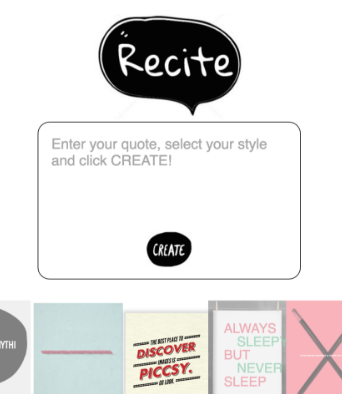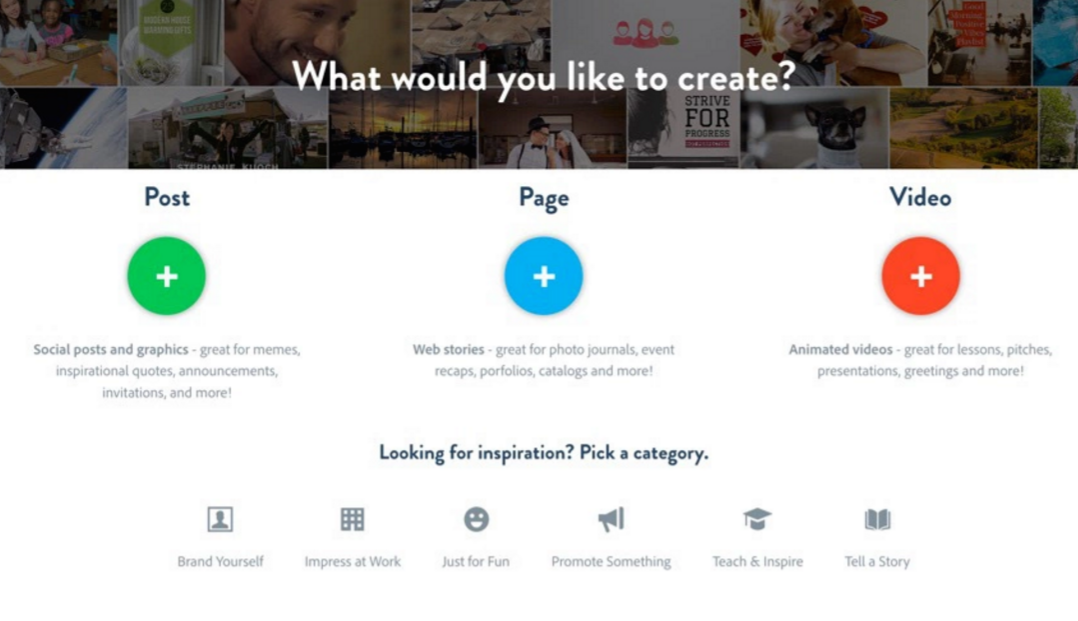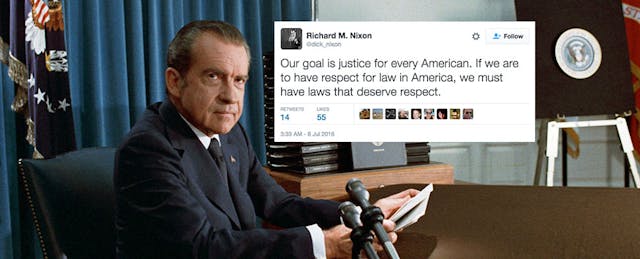During the 2008 presidential election, Barack Obama and his team pioneered the use of social media as a powerful campaign tool. It’s easy to forget, given how commonplace the use of social media is today, that back in 2008. sending out reminders and raising money on Twitter while interacting with people on Facebook was a huge deal. Both Twitter and the iPhone were less than a year old. But Obama’s use of mobile devices and social media changed political campaigns forever.
Now, imagine what earlier campaigns might have looked like if social media tools had been available. Think about how the use of social media may have affected the 1860 presidential election. While we can complain about the divisiveness of the 2016 version, the 1860 election was a particularly tumultuous period in American history. And it was fairly close—with no one candidate winning a majority of the popular vote.
So... I’m curious. What would Twitter posts from the Lincoln campaign look like? How might Stephen Douglas have used Facebook? Breckinridge and Instagram? Would John Bell have posted YouTube videos?
In the early spring, I had the chance to be part of a conversation that focused on using social media tools and strategies as part of educators’ instructional design. Is it productive to encourage the use of social media and smart devices in the classroom? More specifically, can asking students to think about the fictional impact of social media on historical events such as the 1860 election improve learning?
In my Professional Learning Community, we chatted about the instructional possibilities. We all agreed that using tools such as Twitter and Instagram can engage students in the learning process and can be a great hook for pulling them into content. But how do you do it?
Student-developed social media campaigns for past elections
One instructional idea involved having kids develop a social media campaign for past elections, and consider the following questions:
- If current social media tools were available to historical figures, what would the branding look like?
- What platform would people of the past have used? Why? What would they say?
- Could kids take speeches, letters, and photos from past elections to create messages for social media? (I think the answer is yes.)
The lesson needs to be crafted and well-structured, but I think asking kids to use primary source evidence wrapped inside modern tools and practices could be a way to help them think a bit more deeply about the messages contained within that evidence.
Beyond Facebook, Instagram, and Twitter: Tools for students to jazz up their social media campaigns
One tool that could be used for this is Recite, a quick and easy tool that lets you and your students create visual products that can be used in both current and historical social media posts. No account creation needed. It’s easy to use, and easy to share. Simply type in a message, select a style, and click Create, as shown below. Take a screenshot or share via traditional social media options, and you’re good to go. (See below.)

Let’s try this, for a moment. If Lincoln’s staff were to use Recite during the 1860 campaign, Twitter users might see something like this:

It’s not just about Recite, however—there are other tools available. Personally, I love a new tool specifically designed to generate friendly social media content called Adobe Post. Post is part of a larger suite of other tools called Adobe Spark. The integrated package consists of:
- Spark Post: an iOS mobile app that enables anyone to create stunning social posts and graphics in seconds
- Spark Page: an iOS mobile app that helps users create web stories
- Spark Video: an iOS mobile app that enables users to create compelling animated videos in minutes
- Adobe Spark: a browser-based version of Post, Page, and Video

Post gives you a lot of flexibility to create a variety of images for use in social media. And like Recite, Post also gives you the ability to incorporate a lot of primary source information in visual ways. Post—and the rest of the Spark suite—do require a free account, but it is straightforward. See one of the products below!

Beyond Recite and Adobe, you should also explore the different tools available at classtools.net, where Russel Tarr has created and made available a Facebook and Twitter generator that might be useful to you and your students. And if you’re a school without the benefit of loads of edtech, give my paper Facebook or Twitter templates a try.
This sort of thinking on the part of your students fits neatly into the four dimensions of the National Council for the Social Studies Inquiry Arc and my own C4 Framework. We want to give kids problems for them to solve, so have them collect and organize information, collaborate with others, create a solution, and communicate that solution outside the classroom—all through this type of learning experiment.
Using social media tools pairs nicely with all of those skills. What might it look like if you integrated social media more into your instructional design?


